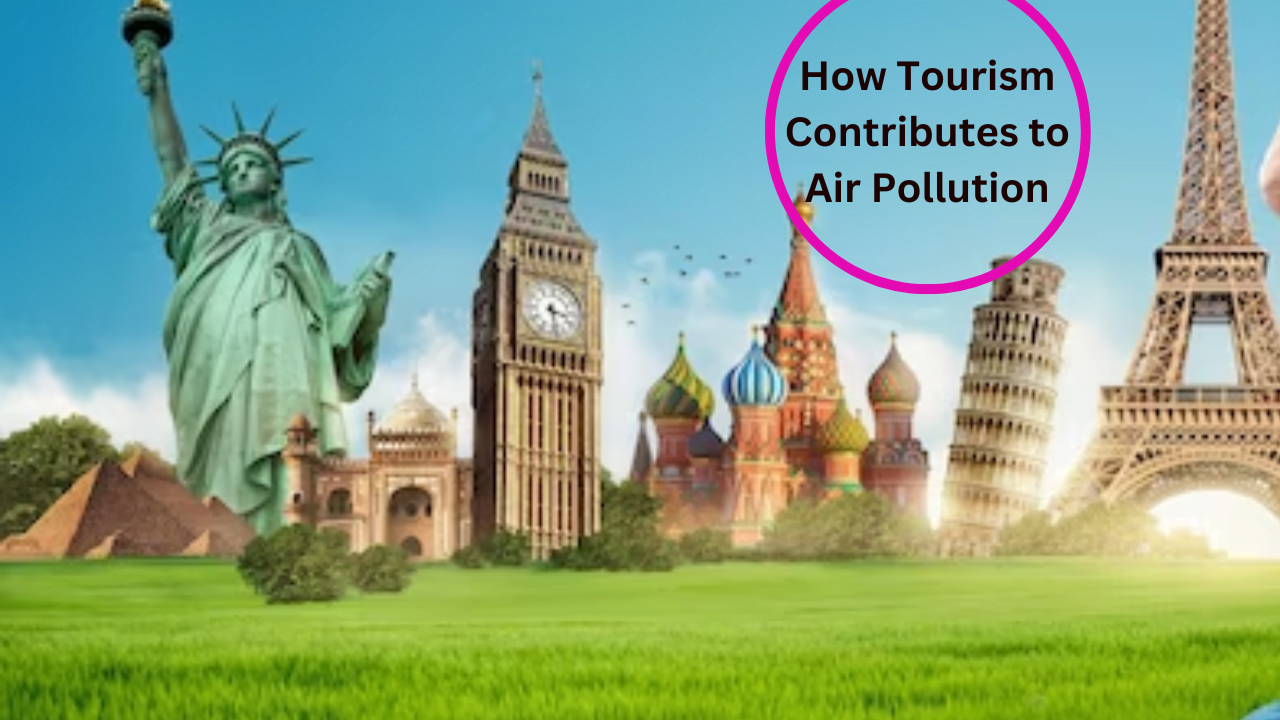Tourism, the seemingly innocuous pastime of exploring new landscapes and cultures, harbors a hidden secret: its significant contribution to air pollution. While capturing breathtaking sunsets and indulging in local delicacies seem harmless, the journey to and from, the activities enjoyed, and the very infrastructure that supports tourism, all leave an invisible footprint on the air we breathe. Understanding the extent of this impact is crucial to steering the industry towards a cleaner, more sustainable future.
Clearing the Haze: Unmasking the Air Pollution Footprint of Tourism
The Carbon Trail of Travelers:
Transportation holds the unenviable title of the biggest polluter in tourism. Airplanes, fueled by fossil fuels, pump out plumes of greenhouse gases and harmful pollutants like nitrogen oxides (NOx) and sulfur dioxide (SO2). Studies estimate that aviation alone accounts for roughly 2% of global CO2 emissions, with international flights being the major culprit. Cruise ships, with their massive engines churning through the air, add another layer of emissions, further polluting coastal areas. Even seemingly eco-friendly options like trains contribute, albeit to a lesser extent, releasing diesel particulates and NOx.
Beyond the Postcard: The Invisible Cost of Travel on Air Quality
Beyond the Engines: A Web of Emissions:
The tourist footprint extends far beyond the exhaust pipes of vehicles. Once at their destination, tourists generate emissions through their choices and activities. Sightseeing tours often use cars or buses, adding more fumes to the air. Accommodation, if powered by fossil fuels, contributes to local pollution. Even seemingly innocuous activities like cooking in vacation rentals or enjoying bonfires emit pollutants like particulate matter. Add to this the souvenirs produced using energy-intensive processes and transported across continents, and the web of tourism-related emissions becomes intricate and undeniable.
Breathless Beauty: How Tourism Pollutes the Air We Breathe in Paradise
The Invisible Toll on Health and Environment:
The consequences of this invisible air pollution are far-reaching. Increased emissions directly impact human health, leading to respiratory problems, cardiovascular diseases, and even premature death. For destinations with fragile ecosystems, air pollution can be an ecological disaster, harming plant and animal life, disrupting natural habitats, and even altering weather patterns. The Taj Mahal, a magnificent symbol of India, stands as a stark reminder of how air pollution can erode cultural heritage, damaging its pristine marble surface.
Trading Souvenirs for Clean Air: Can Sustainable Tourism Save Our Skies
Navigating a Cleaner Path: Towards Sustainable Tourism:
The good news is that awareness about the environmental impact of tourism is growing. A wave of initiatives is gaining momentum, pushing for cleaner and more responsible travel practices. Airlines are exploring biofuels and carbon offsetting schemes. Green transportation options like bicycles and electric vehicles are being integrated into tourist infrastructure. Hotels are adopting energy-efficient practices and sourcing local produce to reduce their carbon footprint. And, responsible travelers are making conscious choices, opting for eco-friendly destinations, modes of transport, and accommodation.
From Carbon Cowboys to Eco-Explorers: Reimagining Travel for a Healthier Plane
A Collective Responsibility:
Ultimately, curbing the air pollution footprint of tourism demands a collective effort. Governments must incentivize sustainable practices and invest in green infrastructure. The tourism industry needs to prioritize responsible operations and offer eco-friendly travel options. Tourists, empowered with knowledge, must make informed choices that minimize their environmental impact. By working together, we can forge a path towards a future where tourism thrives in harmony with clean air and healthy ecosystems.
Beyond the 1000 Words:
This glimpse into the air pollution footprint of tourism is just the beginning of a crucial conversation. As the world embraces sustainable practices, research and innovation will play a vital role in developing cleaner technologies and transportation options. Travelers can educate themselves further through resources like the Green Tourism Association or the Global Sustainable Tourism Partnership. By recognizing the hidden cost of travel and making conscious choices, we can pave the way for a future where exploration leaves a trail of positive memories, not invisible clouds of pollution.
Remember, a cleaner future for tourism starts with awareness and action. So, the next time you pack your bags, remember to pack a commitment to responsible travel. Choose destinations that prioritize sustainability, opt for greener modes of transport, and support eco-friendly businesses. Together, we can write a new chapter in the story of travel, one where the only footprints we leave behind are those etched in sand, not etched in polluted air
